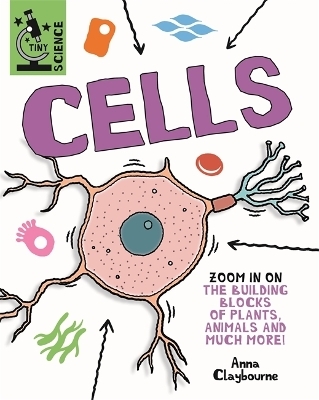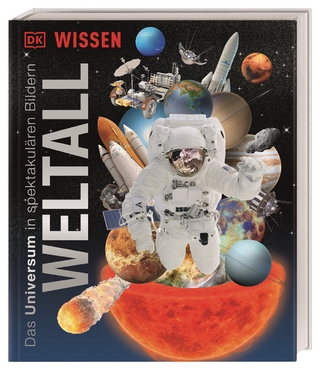
Tiny Science: Cells
Wayland (Verlag)
978-1-5263-1783-4 (ISBN)
Tiny Science - giving MINI-scientists MAXIMUM understanding of the MICROscopic!
A fun and visual series exploring the science of things we cannot see with the naked eye, zooming right in on the itty-bitty creatures, objects and machines that have an enormous impact on us and the world around us. Perfect for children keen to get up-close to the building blocks of our world.
Tiny Science: Cells places remarkable cells UNDER THE MICROSCOPE to find answers to exCELLent questions, such as ...
- How many cells are there in an apple?
- What is the biggest cell in the world?
- How do cells live and multiply?
Fun cartoon-style illustrations interact with real-life pictures of many amazing microscopic features, making this series ideal for engaging readers aged 8 and up.
It's time to explore the infinitesimal!
Other Tiny Science books in the series:
Germs
Genes and DNA
Microscopic Creatures
Atoms and Molecules
Nanotechnology
Anna Claybourne has written over 150 children's books on all kinds of subjects, from sharks, black holes and splitting the atom to how to draw, Shakespeare's life, and Greek myths and legends. She knows a lot about conservation in the rain forests of Costa Rica as she once volunteered there for three months. She likes space, sewing and music, plays the trombone and loves going camping. Matt Lilly attended Goldsmith's College, London before starting at Nassington Press and moving to Walker Books, where he worked for 17 years. After his time with Walker, Matt teamed up with Jacqui Bailey, editor and author, and formed 'Two's Company'. In 2002 they were short-listed for both the Aventis Science Junior Prize and the Blue Peter Book of the Year Award for A Cartoon History of the Earth, published by A & C Black, and in 2011 for The Royal Society Young People's Book Prize for What's the Point of Being Green, published by Watts. Over the last 20-odd years Matt has designed and illustrated a variety of non-fiction titles for several publishers and organisations including Franklin Watts, Wayland, A & C Black, David & Charles, Mathew Price Limited, Smart Learning and the BBC. Matt has also designed and illustrated marketing materials for a wide range of local businesses in Devon.
1: What are cells?
2: How many cells?
3: Types of cell
4: Parts of a cell
5: How cells work
6: Small and simple
7: Plant cells
8: Animal cells
9: Fungi cells
10: Human body cells
11: Making more cells
12: Working together
13: How tiny?
14: Glossary and Further info
15: Index
| Erscheinungsdatum | 09.03.2022 |
|---|---|
| Reihe/Serie | Tiny Science |
| Illustrationen | Matt Lilly |
| Verlagsort | London |
| Sprache | englisch |
| Maße | 214 x 270 mm |
| Gewicht | 340 g |
| Themenwelt | Kinder- / Jugendbuch ► Sachbücher ► Naturwissenschaft / Technik |
| ISBN-10 | 1-5263-1783-4 / 1526317834 |
| ISBN-13 | 978-1-5263-1783-4 / 9781526317834 |
| Zustand | Neuware |
| Informationen gemäß Produktsicherheitsverordnung (GPSR) | |
| Haben Sie eine Frage zum Produkt? |
aus dem Bereich


